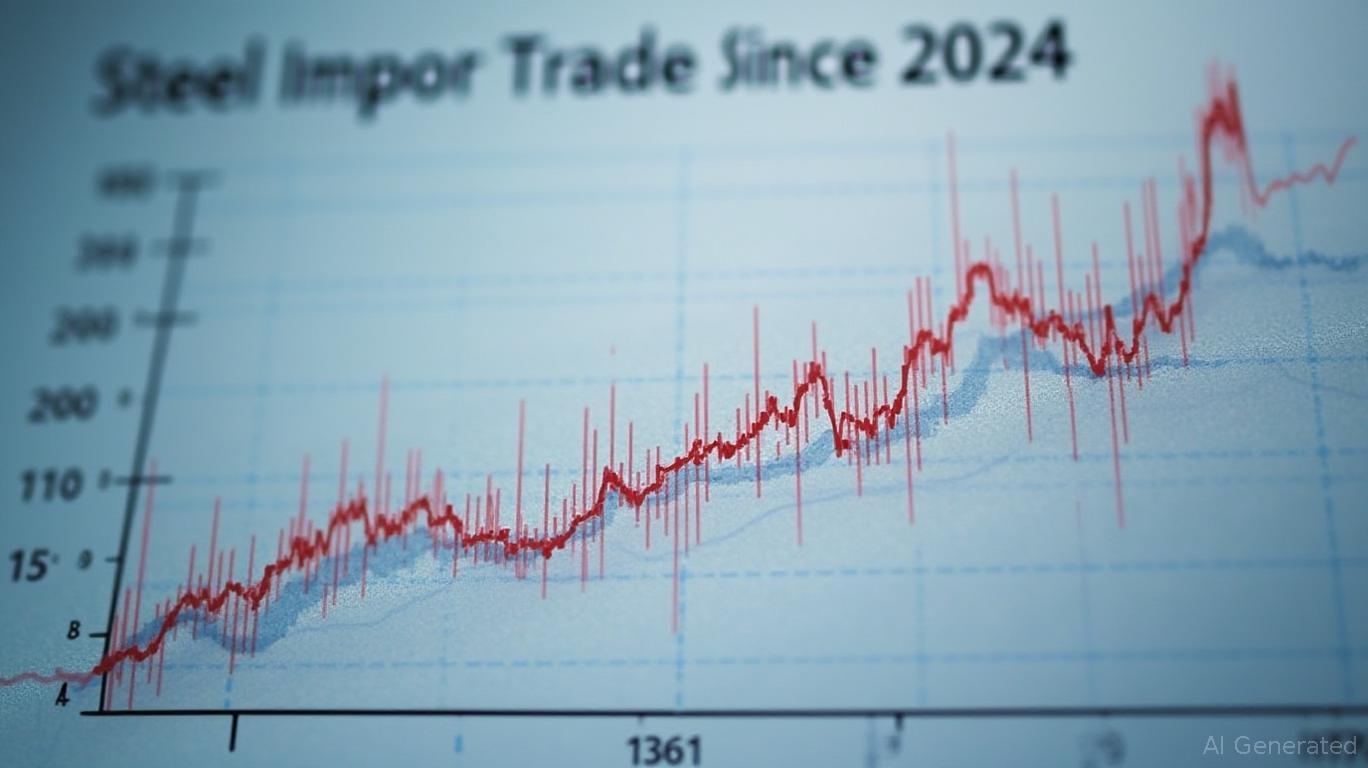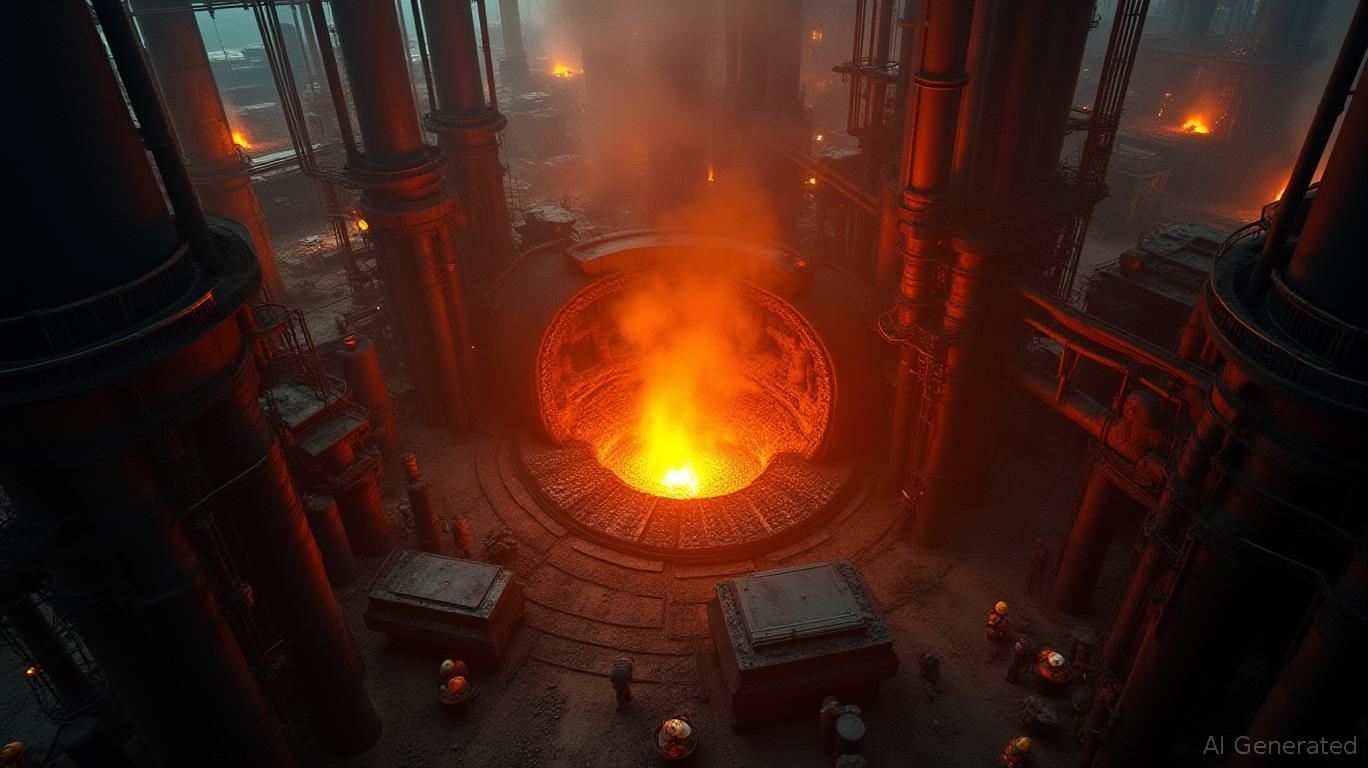Navigating Volatility: Key Indicators for Investing in the Steel Industry
Friday, Jan 3, 2025 8:35 pm ET
Introduction
Investing in the stock market often requires a keen understanding of various industries and their unique characteristics. The steel industry, known for its cyclical nature, presents both opportunities and challenges for investors. In this article, we'll explore the key indicators that influence stock market movements in the steel sector and provide actionable insights for investors looking to navigate this volatile landscape.
Core Concept Explanation
The steel industry is part of the broader materials sector and plays a crucial role in construction, automotive, and manufacturing industries. A primary characteristic of this industry is its cyclical nature, meaning it experiences regular periods of growth and decline influenced by economic conditions. Key indicators that investors watch include global demand, raw material prices (like iron ore and coal), production capacity, and government policies.
Understanding these indicators helps investors anticipate market trends and make informed decisions. For instance, when global demand for steel increases, companies might ramp up production, potentially driving up stock prices. Conversely, when demand falls, companies may face oversupply issues, impacting profitability and stock performance.
Application and Strategies
Investors can apply these indicators in several ways. A common strategy is to monitor global economic trends and infrastructure projects, which can signal increased steel demand. Additionally, tracking raw material prices provides insights into production costs and profit margins for steel companies.
Another strategy is to evaluate government policies, such as tariffs or subsidies, which can greatly influence the industry's performance. For example, a government might impose tariffs on imported steel to protect domestic producers, thus benefiting local companies but potentially increasing costs for industries reliant on steel.
Case Study Analysis
Consider the case of U.S. Steel Corp (X) during the 2018 imposition of tariffs on imported steel by the U.S. government. The tariffs were intended to bolster domestic steel production. Initially, U.S. Steel saw a rise in stock prices due to anticipated increased demand for local products. However, the long-term effects were mixed, as retaliatory tariffs from other countries affected export markets and increased raw material costs.
This example illustrates how policy changes can create short-term gains but also long-term challenges, highlighting the importance of a nuanced approach to investing in the steel industry.
Risks and Considerations
Investing in the steel industry comes with inherent risks. Market volatility is a significant factor, as global economic shifts can rapidly alter demand and supply dynamics. Moreover, reliance on fluctuating raw material prices can affect profit margins.
To mitigate these risks, investors should conduct thorough research and maintain a diversified portfolio. Staying informed about global economic trends and government policies can help anticipate changes. Additionally, setting stop-loss orders and regularly reviewing investment positions can protect against unexpected downturns.
Conclusion
Investing in the steel industry requires a comprehensive understanding of various indicators that influence market movements. By keeping an eye on global demand, raw material prices, and government policies, investors can better navigate the cyclical nature of this sector. While risks are inherent, informed strategies and diligent research can lead to rewarding opportunities. Investors who are prepared to adapt to changing market conditions can find success in this dynamic industry.
Investing in the stock market often requires a keen understanding of various industries and their unique characteristics. The steel industry, known for its cyclical nature, presents both opportunities and challenges for investors. In this article, we'll explore the key indicators that influence stock market movements in the steel sector and provide actionable insights for investors looking to navigate this volatile landscape.
Core Concept Explanation
The steel industry is part of the broader materials sector and plays a crucial role in construction, automotive, and manufacturing industries. A primary characteristic of this industry is its cyclical nature, meaning it experiences regular periods of growth and decline influenced by economic conditions. Key indicators that investors watch include global demand, raw material prices (like iron ore and coal), production capacity, and government policies.
Understanding these indicators helps investors anticipate market trends and make informed decisions. For instance, when global demand for steel increases, companies might ramp up production, potentially driving up stock prices. Conversely, when demand falls, companies may face oversupply issues, impacting profitability and stock performance.
Application and Strategies
Investors can apply these indicators in several ways. A common strategy is to monitor global economic trends and infrastructure projects, which can signal increased steel demand. Additionally, tracking raw material prices provides insights into production costs and profit margins for steel companies.
Another strategy is to evaluate government policies, such as tariffs or subsidies, which can greatly influence the industry's performance. For example, a government might impose tariffs on imported steel to protect domestic producers, thus benefiting local companies but potentially increasing costs for industries reliant on steel.
Case Study Analysis
Consider the case of U.S. Steel Corp (X) during the 2018 imposition of tariffs on imported steel by the U.S. government. The tariffs were intended to bolster domestic steel production. Initially, U.S. Steel saw a rise in stock prices due to anticipated increased demand for local products. However, the long-term effects were mixed, as retaliatory tariffs from other countries affected export markets and increased raw material costs.
This example illustrates how policy changes can create short-term gains but also long-term challenges, highlighting the importance of a nuanced approach to investing in the steel industry.
Risks and Considerations
Investing in the steel industry comes with inherent risks. Market volatility is a significant factor, as global economic shifts can rapidly alter demand and supply dynamics. Moreover, reliance on fluctuating raw material prices can affect profit margins.
To mitigate these risks, investors should conduct thorough research and maintain a diversified portfolio. Staying informed about global economic trends and government policies can help anticipate changes. Additionally, setting stop-loss orders and regularly reviewing investment positions can protect against unexpected downturns.
Conclusion
Investing in the steel industry requires a comprehensive understanding of various indicators that influence market movements. By keeping an eye on global demand, raw material prices, and government policies, investors can better navigate the cyclical nature of this sector. While risks are inherent, informed strategies and diligent research can lead to rewarding opportunities. Investors who are prepared to adapt to changing market conditions can find success in this dynamic industry.




_23f7f7eb1749627884277.png)






